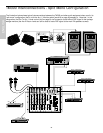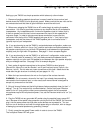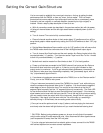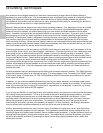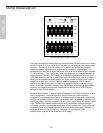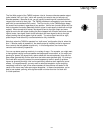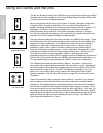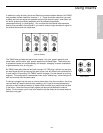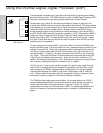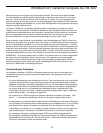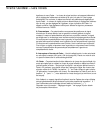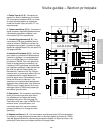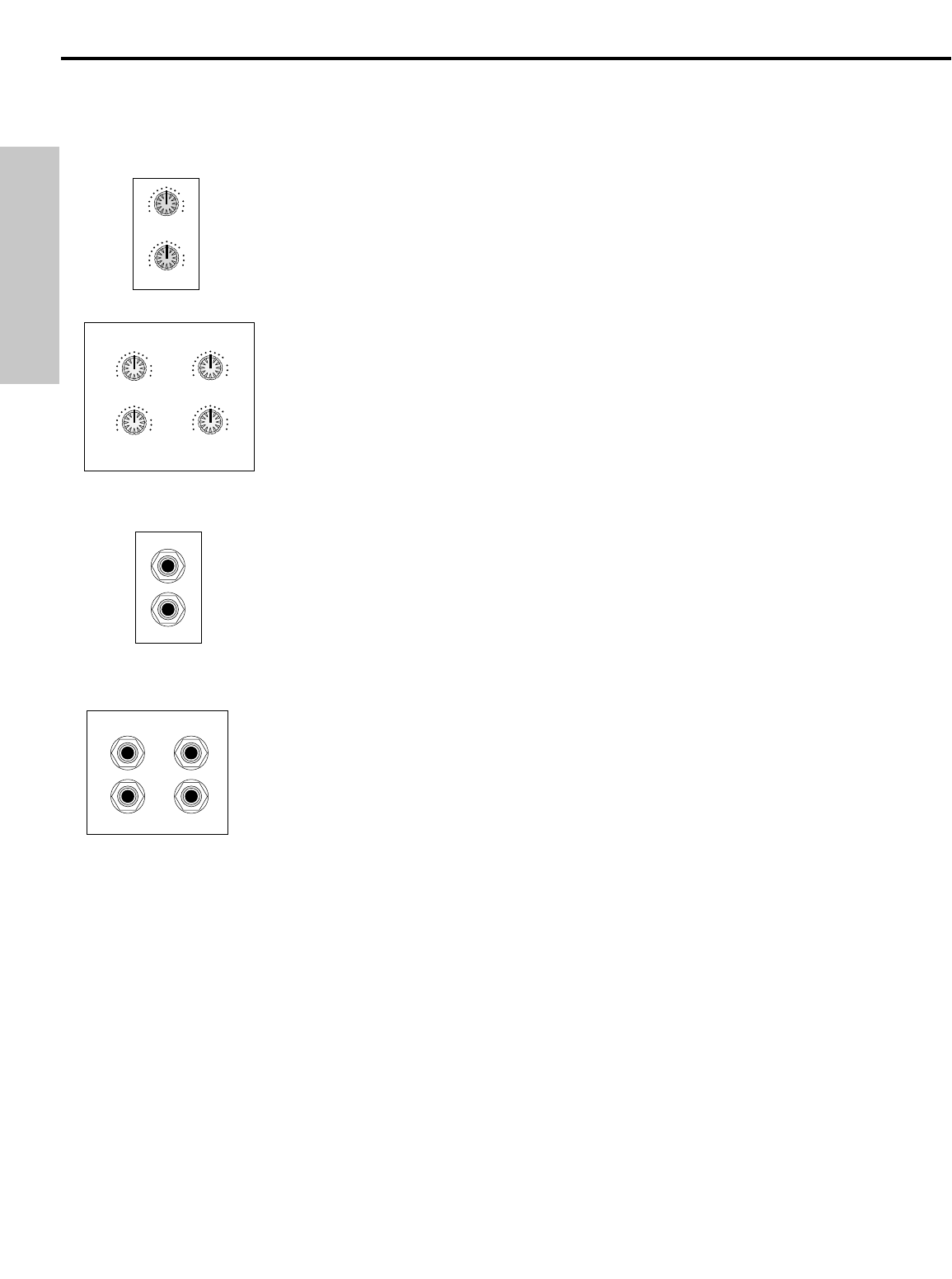
22
Using Aux Sends and Returns
The two Aux Sends provided by the TM300 allow you to combine the signal from multiple
channels and send the resulting mix to the internal Digital Signal Processor (DSP) and/or
to external devices such as effects processors.
When a channel Aux Send knob is at its 2 o’clock “0” position, the signal is routed with
unity gain (that is, no boost or attenuation). As it is turned clockwise from the “0”
position, the signal is boosted; as it is turned counterclockwise from the “0” position, it is
attenuated. Aux Send 1 is post-eq but
pre-fader; that is, the level of the signal is
determined solely by the channel’s Trim control and equalizer settings. In contrast,
Aux Send 2 is post-fader (and post-eq); that is, the level of the signal is affected by the
channel’s Trim control, equalizer settings, and fader position.
There are also two master Aux Send knobs, located in the TM300’s main section. These
control the overall level of the total mixed signal being routed to the internal DSP and/or
output from the two unbalanced 1/4" Aux Send jacks. Note that, when the TM300 is
operated in a “split mono” configuration (that is, when the Aux 1 / Monitor switch is
pressed in), the Aux Send 1 signal is internally routed to the right speaker outputs
(normally connected to onstage monitors). In this configuration, the master Aux 1 Send
knob acts as a master level control for the onstage monitor output. The Rev To Aux 1
Level control (see #16 on page 8) provides a means for adding reverb or other
processed signal from the internal DSP to onstage monitors or headphones connected to
the Aux Send 1 jacks (when operating the TM300 in standard stereo configuration) or to
the right speaker outputs (when operating the TM300 in “split mono” configuration).
The TM300 also provides two stereo Auxiliary Returns. Aux Return 1 allows you to
return signal from outboard devices connected to the Aux Return 1 jacks. Aux Return 2
can also be used to return signal from outboard devices, but only when the DSP On/Off
switch (see #18 on page 8) is off. If the DSP On/Off switch is pressed in (“on”), Aux
Return 2 is used to return signal from the internal DSP and the Aux Return 2 jacks
become inoperative. See the “Using DSP” section on page 22 in this manual for more
information.
Each of the stereo Aux Returns acts like a stereo channel. In practice, you’ll probably
want to use one or both of the Aux Returns to bring in signal from connected effects
processors. If the effects processors have stereo outputs, they should be connected to
both the left and right Aux Return inputs so that their stereo integrity is retained. If they
have mono outputs, you can route them to either the left or right inputs. In this way, you
can actually connect up to four monophonic devices to the TM300’s Aux Return section.
Note that signal arriving at the left Aux Return input is automatically panned hard left and
signal arriving at the right input is automatically panned hard right. The TM300 Aux
Return jacks are unbalanced 1/4" inputs.
AUX1
∞
+10
PRE
AUX2
∞
+10
0
0
AUX RET 1
+10
0
AUX SEND 1
+10
0
∞
∞
AUX RET2/REV
+10
0
AUX SEND 2
+10
0
∞
∞
AUX SEND 1
AUX SEND 2
+4dB
AUX RET1
R
AUX RET2
L/MONO
+4dB
Channel Aux Sends
Main section Aux Returns
and main Aux Sends
Aux Send jacks
Aux Return jacks
ENGLISH



